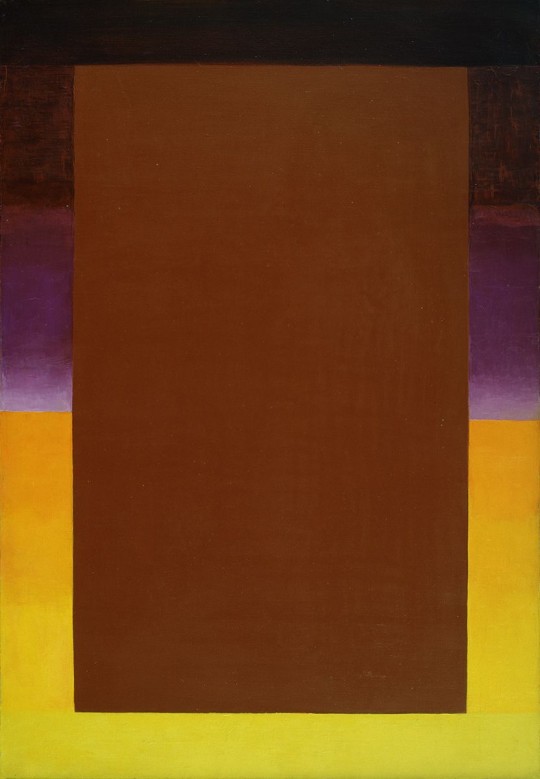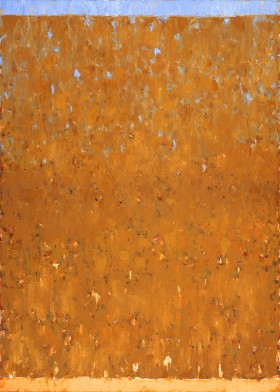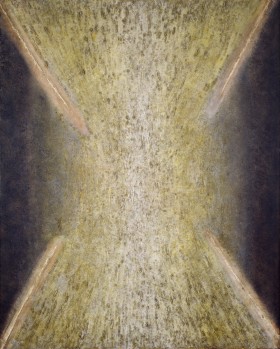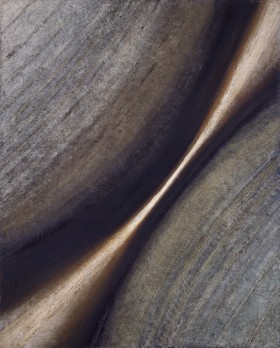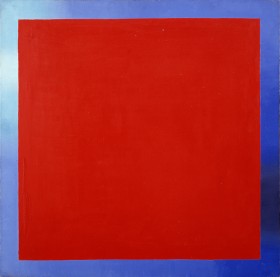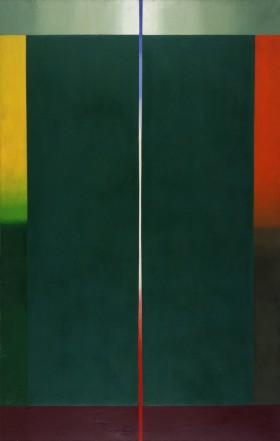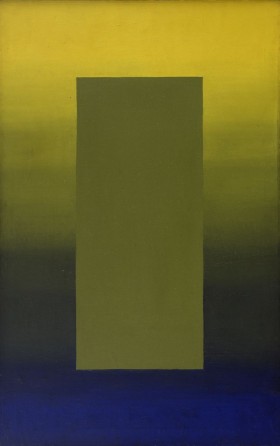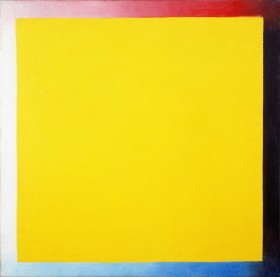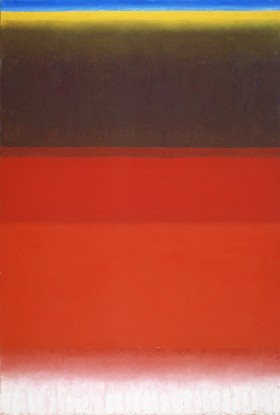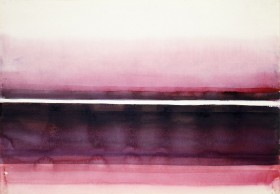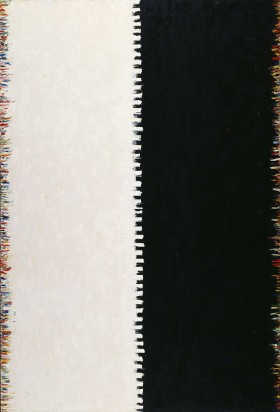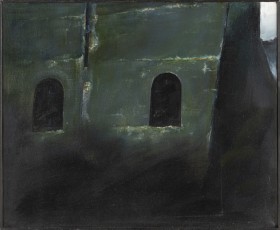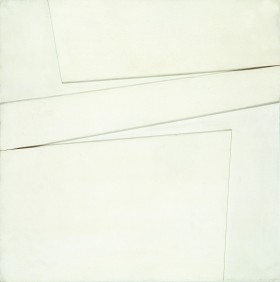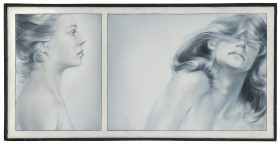Painting CCCXXVI
- type of object: painting
- date: 1974
- material/technique: oil on canvas
- dimensions: 100 x 70 cm
- inventory No.: M-110
- image licensed under: CC BY-NC-ND 3.0
Since 1955, Stefan Gierowski painted genre scenes observed in life (The Pigeon Coop, Scrap Iron Pile). Houses, people, and animals were represented in the paintings using symbols of a simplified, but objective stile. In the background, symmetrically arranged planes caught the eye, testifying to the pursuit of structural discipline. In 1957, Gierowski eliminated references to the outside world from his paintings and created a characteristic abstract style. At the same time, he ceased to give his pictures literary titles, substituting the word ‘Painting’ and consecutive Roman numerals. He created nearly monochromatic works with a surface texture developed to varying degrees, whose main content was the interaction of colours creating the mood. In 1959–1960, Gierowski simplified his painting means by limiting the colour and texture effects. This was an intermediate stage leading to explorations on the boundary of optics and kinetics. Paintings from the 1960s depicted dynamic spatial arrangements of bands painted with dark colours in various values. In 1968, intense colours once again appeared in Gierowski’s works. In the 1970s and later, he built space in the painting using arrangements of contrasting colour surfaces. These compositions were now made up of horizontal bands that moved into the foreground or the background, depending on colour. Sometimes a uniformly paint-filled rectangle appeared on a gradient background created by painting the canvas with smooth tonal transitions between colours. This arrangement of a geometric figure and the background created the illusion of space.
Ewa Skolimowska, translated by Paulina Bożek
